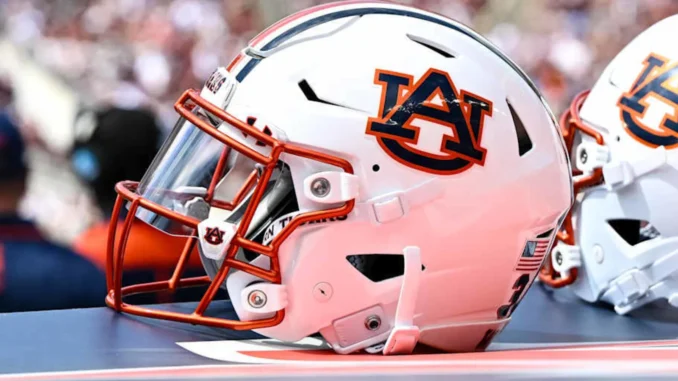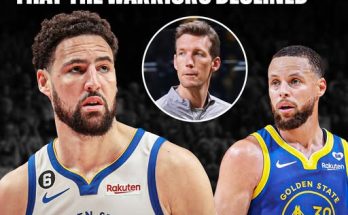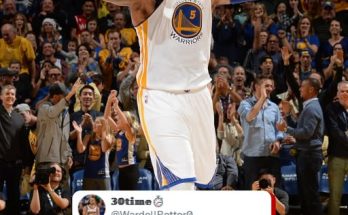Officials Ignored the Alabama Player’s Crushing Hit on the Auburn Standout, Resulting in a Heavy Fine
Introduction
College football is no stranger to controversies, and one of the most heated debates surrounds the issue of player safety and officiating decisions. The latest uproar stems from a shocking incident during the annual Iron Bowl clash between the Alabama Crimson Tide and the Auburn Tigers. A devastating hit by an Alabama player on Auburn’s standout athlete went unnoticed by officials, sparking outrage and eventually resulting in a hefty fine. The incident has reignited discussions about refereeing standards, player safety protocols, and the overall integrity of the game.
The Controversial Hit
The Iron Bowl, one of the fiercest rivalries in college football, is known for its intensity, and this year’s game was no exception. Late in the second quarter, an Alabama defensive player delivered a bone-jarring hit on Auburn’s star wide receiver. The force of the impact left the Auburn player sprawled on the field, momentarily motionless, causing immediate concern from teammates, coaches, and fans alike. However, what shocked spectators even more was the officials’ failure to throw a penalty flag.
Replays showed that the hit was high and forceful, possibly violating targeting rules designed to protect players from head and neck injuries. Despite this, the referees chose not to review the play, allowing the game to continue without consequence at that moment. This decision quickly became a focal point for analysts, fans, and sports commentators, many of whom argued that the officials had overlooked a blatant infraction.
The Outrage and Immediate Reactions
Social media exploded with reactions from fans and former players who were appalled by the no-call. Many pointed to previous similar incidents where targeting penalties had been assessed for far less severe hits. Auburn’s coaching staff was visibly frustrated on the sidelines, pleading for an explanation from the referees. Even neutral observers questioned why the officials had chosen to ignore such a dangerous play.
In post-game press conferences, Auburn’s head coach expressed his disappointment in the officiating, emphasizing that player safety should be the priority regardless of the intensity of the rivalry. “I don’t care if it’s the biggest game of the year,” he stated. “We need consistency in officiating. That hit could have ended a player’s season or worse.”
The NCAA’s Response and Fine Imposed
As the controversy grew, the NCAA and Southeastern Conference (SEC) were forced to address the situation. After an internal review, the league determined that the officials had indeed made an error by not assessing a penalty. In response, the Alabama player responsible for the hit was retroactively penalized, and the university was fined a substantial amount due to what was deemed an egregious violation of player safety rules.
The fine—reported to be one of the largest in recent SEC history—was intended to send a strong message that reckless play would not be tolerated. Additionally, the conference announced that the officiating crew involved in the game would be subject to disciplinary review, potentially leading to suspensions or retraining sessions.
The Targeting Rule and Its Application
The NCAA’s targeting rule was implemented to reduce the risk of concussions and severe injuries resulting from high-impact hits. According to the rule, a player is guilty of targeting if they make forcible contact to the head or neck area of a defenseless opponent or use the crown of the helmet to initiate contact. The penalty for targeting includes a 15-yard penalty, ejection of the offending player, and potential suspension for the following game.
However, the enforcement of this rule has been widely inconsistent, with some officials opting to be more lenient in high-stakes games. Critics argue that the targeting rule is not applied uniformly and that certain teams receive favorable calls, leading to frustration among coaches, players, and fans.
In this case, had the referees correctly enforced the targeting rule, the Alabama player would have been ejected, significantly altering the course of the game. Instead, Auburn was forced to continue without their key player while Alabama retained its full-strength roster.
The Impact on Player Safety
The repercussions of the hit went beyond the immediate game. The Auburn player suffered a concussion, forcing him to miss subsequent games. This incident has reignited discussions on how the NCAA and individual conferences can better protect athletes. Many have called for stricter enforcement of safety protocols, including the possibility of using an independent review panel to assess potential targeting penalties during the game rather than relying solely on on-field officials.
Additionally, the NCAA has been urged to implement harsher consequences for referees who fail to make the right calls in critical moments. Some believe that officiating crews should be held publicly accountable through transparency reports detailing their performance each game.
The Role of Instant Replay and Officiating Reforms
One of the key takeaways from this controversy is the necessity for improved officiating and better use of instant replay technology. While referees have access to replay reviews for targeting calls, the fact that they chose not to initiate a review in this case highlights a major flaw in the system. Many have suggested that an independent official, separate from the on-field referees, should have the authority to call for a review of questionable plays in real-time.
Furthermore, some analysts have proposed implementing a rule similar to the NFL’s challenge system, allowing coaches to request a review of plays they believe involve targeting. While this could slow down the game, advocates argue that ensuring player safety should take precedence over concerns about game pacing.
The Broader Implications for College Football
This incident is not an isolated case; rather, it is symptomatic of a larger issue within college football. The SEC and NCAA must take proactive steps to address inconsistencies in officiating and reinforce a commitment to player safety. If decisive action is not taken, the credibility of the sport could be further undermined, with players and coaches losing faith in the fairness of the game.
Moreover, such controversies can impact recruiting, as young athletes and their families prioritize programs that emphasize player well-being. If schools with a reputation for allowing dangerous plays to go unpunished continue to be in the spotlight for the wrong reasons, it could affect their ability to attract top-tier talent.
Conclusion
The Alabama player’s crushing hit on the Auburn standout and the subsequent lack of immediate action by officials have sparked widespread debate about the state of officiating in college football. While the retroactive fine and disciplinary measures imposed by the SEC are a step in the right direction, they do not change the fact that the referees failed in their duty to protect players on the field.
Moving forward, the NCAA must prioritize officiating reforms, stricter targeting enforcement, and enhanced review mechanisms to ensure that incidents like this do not continue to mar the integrity of the sport. If real change is implemented, college football can move toward a safer, fairer, and more accountable future.



